What will we do with all the clean hydrogen?
The ten biggest questions in energy & climate tech, Question 7
Current hypothesis: Do the things that only hydrogen can do.
First, an important note: It would be arrogant to write about the role of hydrogen in the energy transition without first paying homage to Michael Liebreich.
I’ll consider this post modestly successful if I manage to build on Leibreich’s public thinking about hydrogen, rather than just restate his points without his British wit. Seriously, you should go read Liebreich yourself: check out his latest here, and his seminal 2019 posts on hydrogen here.
With that preamble out of the way, I need to begin by talking about Uncle Sam.
Uncle Sam wants YOU to make clean hydrogen… but he’s not quite sure why
Over the past five years, chances are good that your government has fallen for clean hydrogen. I feel pretty confident saying this, despite having readers all over the world, because this statement is true almost everywhere.
The EU led the way, back in July 2020, with one of the first major hydrogen agendas, including an official “hydrogen strategy”. The European Commission has estimated a total cost to achieve its 2030 clean hydrogen production goals on the order of €100 billion.1
Europe has since launched…
A “hydrogen accelerator”
A “hydrogen bank”
A “hydrogen energy network” (which I gather is a sort of hydrogen focused support group for energy ministers)
A “clean hydrogen partnership”
A “clean hydrogen alliance” (which is apparently different from a partnership)
A “hydrogen public funding compass” to help make sense of the myriad of individual hydrogen support mechanisms that will flow from all of these policy initiatives
It turns out that Europe was a trendsetter. As of July 2023, according to Bloomberg New Energy Finance, 42 countries have promulgated their own national “hydrogen strategies”.
Not to be outdone, the US finally responded with the awkwardly named Inflation Reduction Act. Among the many, many clean energy solutions singled out for a subsidy by the IRA, hydrogen was far & above the biggest winner. The US government will now pay you more than three times as much to produce a joule of zero-carbon hydrogen as it will pay for a joule of zero-carbon electricity from renewables.
And if you happen to produce hydrogen via electrolysis powered by wind energy, you get to pocket both subsidies!
By the end of the decade, I’m confident that the 45V tax credit for clean hydrogen, $3 per kilogram, will exceed the total cost of hydrogen production. My firm EIP is an investor in Electric Hydrogen, whose low-cost approach to clean hydrogen production is well on track to achieve this goal; and while I believe Electric Hydrogen is the best in the business, they probably won’t be the only ones to accomplish this feat. (More on this topic in a bit…)
If this dynamic holds up, it will be theoretically possible to produce clean hydrogen only to vent it into the air… and still make a tidy profit.
So, the world seems to be throwing a hydrogen party. Governments are rolling out the red carpet for hydrogen producers. The question is: Will anyone who wants to consume all of this new clean hydrogen show up?
Hydrogen is a “swiss army knife” for the energy transition… and that’s not a compliment
In principle, hydrogen could be an attractive net-zero carbon energy carrier for a wide range of energy end uses. After all, our current economy is founded on hydrocarbons; and in hydrocarbon molecules it’s the bonds between carbon & hydrgoen that do all of the heavy lifting. All of those pesky carbon atoms are mostly just contributing density & stability, and of course they’re wrecking the climate.
Hence, transitioning to hydrogen alone seems like an elegant solution. Hydrogen could theoretically serve as a nearly universal energy “medium of exchange”, as a fuel for everything from vehicles, to power generation, to industry, to home heating. That’s why hydrogen is sometimes described as a “swiss army knife” for the energy transition.
I agree that “swiss army knife” is a pretty apt metaphor for hydrogen. But unlike hydrogen’s many admirers, I don’t view this metaphor as especially flattering.
Consider: Swiss army knives are undoubtedly fun to play with, and they’re great for camping trips when you can’t carry all of the individual tools you might need. But cramming all of those tools into a single form factor makes them all more awkward to work with. Pop quiz: How often have you seen someone on an actual job site pull out a swiss army knife?
Hydrogen is also awkward to work with… and that’s putting it mildly. In a prior post on energy storage, I referred to hydrogen as a “pain in the ass molecule”. To begin with, it has very low volumetric energy density. Even when pressurized to 700 bar, hydrogen contains less than 15% of the energy per liter as diesel, and only a little over twice as much energy per liter as a lithium-ion battery.
It’s also true that hydrogen is super lightweight, with much better gravimetric energy density than other energy carriers. This is certainly a virtue for any kind of transportation fuel. But in many such applications, volume is as much if not more of a constraint than weight.
Second, hydrogen calls for more specialized, expensive handling than any of the fuels we use today. Exposure to hydrogen embrittles the most commonly used metals for all the tanks, pipes, and other equipment needed to store & transport liquids or gases. Steel, which is the world’s go-to structural metal, is especially vulnerable to hydrogen embrittlement. Moreover, hydrogen has a way of escaping through the tiniest of gaps, so it requires components like seals, gaskets, and valves to be extra tight & robust.
So, yes, hydrogen is a lot like a swiss army knife: versatile, but unwieldy.
You’d better have a very good reason to turn electricity into hydrogen
Because hydrogen is so unwieldy, you’d better have a good reason to make it, period. But you’d better have an especially good reason to make it from electricity.
So-called “green” hydrogen is generated via the process of electrolysis, which uses electricity to split water into hydrogen & oxygen. (Of course, the electricity involved must also be “green”, by which I mean any zero-carbon power source.2) Electrolysis consumes nearly a third of the energy input to the process, leaving only around 70% embodied in the resulting H2 molecules. That’s a pretty big efficiency loss for clean hydrogen, right off the bat. For reference, only about 5% of electricity is lost in the electrical grid.3
Also, electrolysis is currrently super expensive. Fully installed systems cost somewhere in the ballpark of $1,000-1,500 per kilowatt, which is the same ballpark as large-scale wind or solar power generation.
So, at the moment, electrolysis means doubling the cost of energy generation in order to achieve 70% of the yield. 😐
Fortunately, I’m convinced that electrolysis is on track to get a lot cheaper. As I previewed above, Electric Hydrogen has already made radical improvements over incumbent solutions which allow the company to squeeze a lot more energy through the same basic electrolyzer “stack” without adding more expensive components. Electric Hydrogen’s core product is also designed for low-cost manufacturing, and includes full balance of system integration for large-scale (100 MW+) facilities. The result is a much more cost-effective solution.
I’m partial to Electric Hydrogen’s approach, but I should note that there are a number of other promising technology developers in this space. Alongside governments, many venture capitalists have also become smitten with green hydrogen, and have funded lots of novel approaches to producing it. For example, another company worth highlighting is H2Pro, which is developing a distinctive, ultra-high-efficiency alternative to electrolysis for splitting water.
So, I’m confident that green hydrogen equipment will get cheaper, and maybe also more efficient. Yet no matter how much the process improves, converting electricity to hydrogen will always entail additional cost and efficiency losses relative to leaving electricity alone. Hence, a joule of clean hydrogen will always be more expensive than a joule of clean electricity.
And that’s just production cost. Electricity has several other big advantages over hydrogen as an energy carrier.
To begin with, electricity has all of the positive attributes of a “swiss army knife” that hydrogen aspires to. It’s extremely versatile. At EIP, we keep on finding more & more applications in which it’s the ideal tool for the job at hand. Mostly, that’s because there are ways of putting electricity to work much more efficiently than hydrogen, or any other chemical fuel for that matter. Of note:
Electric heat pumps are over three times more efficient than burning hydrogen, for delivering heat.4 (I recently published sort of a treatise on heat pumps for buildings, and I’ve also extolled their potential virtues in industrial settings. Go AtmosZero!)
Electrochemical processes, we’re rapidly learning, can be harnessed to produce foundational materials like steel & cement more efficiently than brute force high temperature heating fueled by combustion.
The combination of a lithium-ion battery and an electric motor is about twice as efficient as the combination of a hydrogen fuel cell and a motor, which is the most efficient way to employ hydrogen to move a vehicle.
Lastly, as if these cost & efficiency benefits weren’t enough, electricity has one more obvious advantage over hydrogen: It can be delivered nearly everywhere via the electrical grid, which already exists. Meanwhile, there is practically no existing infrastructure to transport hydrogen anywhere, except between a handful of petrochemical facilities in oil refining hubs like the Gulf coast.
I repeat: You’d better have a very good reason to turn electricity into hydrogen.
Thankfully for Uncle Sam and his friends in Europe, Japan, etc., there are in fact a few very good reasons, although probably not as many as governments are anticipating.
Hydrogen could be cheaper to transport and store than electricity… but only in very large volumes, and only in certain places
Yes, the grid already exists, but it’s already straining under the weight of all of the clean wind & solar power we’re trying to build. There’s now about two times as much wind, solar, and battery storage capacity waiting in US “interconnection queues” as there is total installed power generation capacity of all kinds. (These queues are basically lines to hook up to the electric transmission system.)
Hydrogen, conveniently, is a gas. And it’s a well-established fact that gas pipelines are a much cheaper way to move large quantities of energy than electric transmission lines.
At least, historically, this has been the case for natural gas pipelines. On average in the US, it costs about six times less to build a gas pipeline capable of transporting the same amount of energy as an electric transmission line, over the same distance.
Of course, there are still plenty of questions about the cost & efficiency of long distance hydrogen pipelines. Will they be easier to permit than natural gas pipelines, because they won’t draw the ire of climate activists? Or will they be more difficult to permit, because the public associates hydrogen with the Hindenburg? Can hydrogen pipelines actually be cheaper to build than natural gas, due to hydrogen’s lower viscosity (as one recent study suggests)? Or will hydrogen’s “pain in the ass” qualities make it more expensive?
In any case, it’s very reasonable to assume that transporting gigawatts of hydrogen over hundreds of miles will be cheaper than transporting gigawatts of electricity. After all, whether we can build enough new electric transmission to support renewables deployment is the first of my biggest questions in energy & climate tech.
This leads me to Good Reason to Turn Electricity into Hydrogen #1: It might be the only practical way to tap into vast quantities of the cheapest, remote renewable resources.
Hydrogen’s second major advantage over electricity is that it can also be stored in massive quantities, extremely cheaply, underground. It’s well established that hydrogen can be stored in particular geological formations, specifically salt caverns & depleted gas fields, at an extraordinarily low cost. The capex required to build a large geological hydrogen storage facility can be as low as 1% of the capex of a lithium-ion battery storage facility: just a few dollars per kilowatt-hour.
I want to emphasize, however, that this ultra-low cost storage can only be achieved at ultra-large scale. Underground storage sites cost about the same to develop whether they’re intended to store a few thousand tons of hydrogen, or a few million tons. And the sites where the geology is ideal for this kind of hydrogen storage are not universally accessible.
Nevertheless, it’s clear that hydrogen could enable us to tap into massive quantities of remote renewable energy resources by facilitating much cheaper transport & storage than the electrical grid. This leads me to Good Reason to Turn Electricity into Hydrogen #2: There’s no other practical way to replace the resilience value that we get from our massive stores of fossil fuel.
In a prior post on energy storage, Four Ways to Store Sunlight, I described how the US generally keeps about 47 days worth of primary energy supply on hand at all times, in the form of coal piles, oil tanks, and gas storage reservoirs. That’s a mind-boggling amount of energy to store! It’s way more than all of the renewable power we currently generate in a year.
There are a whole bunch of promising solutions for balancing renewables over the course of hours, up to a few days at a time. Given the right combination of wind & solar power resources, batteries produced by our portfolio company Form Energy can cost-effectively enable 24/7 renewable supply over the course of an entire year. But there’s really nothing besides hydrogen and its derivative molecules (which I’ll return to in a bit) that can balance energy supply & demand between years. Nor is there any other solution that can prepare us for all of the “unknown-unknowns” for which the only real form of insurance would be to keep a month or more of energy stowed away underground.
There’s also good reasons to believe that hydrogen stored underground can serve as a source of resilience for the electricity system, specifically. Again, from Four Ways to Store Sunlight:
“The natural gas turbine fleet is being primed for retrofit in order to run on higher blends of hydrogen, whenever it becomes necessary or economically viable to do so. New gas turbines installed in the next five years will practically all have the ability to consume about 10-18% hydrogen (by energy content) blended into their fuel injection stream. More importantly, the big three turbine OEMs are promoting systems which are ‘retrofit-ready’ for higher blends, even up to 100% hydrogen, by 2030.
Grid operators are going to need gigawatts of new, firm generation capacity in the next 3-7 years, before they’re comfortable deploying next-generation storage technology at gigawatt scale. I personally spend a good deal of my time hanging out with grid operators, so I’m especially aware of how much validation they need to build comfort in assets that are critical to grid reliability. However, I also know they’re increasingly concerned about investing in new assets which might be decarbonized out of a job before they’re fully depreciated.
For operators with an acute need for capacity in this near-term timeframe, so-called “hydrogen-retrofit-ready” natural gas turbines are proving to be an attractive option. These assets offer an unsually high level of ‘option value’ in the scheme of big capex investments in the power sector.
Most importantly, hydrogen-to-power is no longer just theroetical. In Utah, a consortium led by Mitsubishi Power Americas & Magnum Development is developing a large electrolysis & salt cavern storage project intended primarily for gas turbine blending. The US Department of Energy has put a big stamp of validation on the project with a half a billion dollar loan guarantee.”
All this is why I expect that the power sector could become an important long-term customer for clean hydrogen producers.
Wait… Can’t we just use the existing gas grid to transport hydrogen?
We need to talk about hydrogen blending.
Theoretically, we might be able to make use of existing natural gas pipelines to transport hydrogen, simply by blending some hydrogen into them. This would be a major coup for hydrogen, as gas pipeline networks are continent spanning, and capable of transporting much more energy than the electricity grid. In the US, large interstate natural gas pipelines alone are capable of carrying about 1.3 terawatts of energy, which is nearly twice the peak demand for electricity across the country.5 In cold climate regions, peak demand for gas from local distribution utilities is currently about five times as high as peak demand for electricity.
It would be wonderful if we could gradually transition all of this infrastructure to carry more & more hydrogen. Sadly, I don’t see a practical way to make this happen.
The gas industry has reached a tentative consensus that the limit for blending hydrogen into existing gas pipelines is about 20% by volume, which is a paltry 6-7% by energy content (due to hydrogen’s relatively low energy density).
This constraint originates in the pipes themselves. The vast majority of large “midstream” pipelines are made of steel, which I mentioned previously is rapidly embrittled by contact with hydrogen. There are some hypothetical solutions to this problem; for example, the interior of a pipeline could be coated with some kind of hydrogen-proof material. Or, if clean hydrogen can be produced close to population centers, it could be injected directly into local gas distribution systems, as most of the pipes running through cities & towns are already made of polyethylene (plastic). Neither of these fixes addresses all of the pumps, valves, and other ancillary equipment that needs to be prepared to deal with hydrogen’s distinctively slippery nature… but those seem like manageable speedbumps, not showstoppers.
However, neither of these fixes fully addresses an even more fundamental challenge to higher hydrogen blends: once you inject hydrogen into a pipeline, it will flow wherever the gas flows. Even if all of the downstream infrastructure can be prepared to accept more hydrogen, there’s no guaranteeing that every consumer connected to the gas network can be sufficiently prepared. As I wrote in a prior post on heating decarbonization…
Blending more than 7% hydrogen by energy content into a gas network puts every consumer of gas from that network at risk, if they’re not fully prepared. The only way that I can see this being done is with an extremely heavy policy hand. Every level of government will need to be involved. Frankly, I’m just extremely skeptical that the public will tolerate this kind of intervention outside of a handful of jurisdictions.
In short: before you start to blend hydrogen at higher levels into the existing gas network, you need to knock on every single door and make sure that there are no more legacy boilers, furnaces, and ovens that aren’t prepared for hydrogen. Miss a single grandma’s house…and lives could be at risk. Hence, I see hydrogen blending as a fairly niche strategy, in the scheme of decarbonization.
Gas pipeline repurposing is more plausible. There are a number of large gas pipelines in Texas, for example, whose paths happen to connect some of the best wind & solar resources in the country to the massive petrochemical complexes in the Gulf. While those pipelines themselves might need to be decommissioned and rebuilt to carry hydrogen, at least their rights of way can be preserved.
Mostly, though, I expect that hydrogen pipelines will need to be built from scratch. I wish it weren’t so, but at least they’re going to be less expensive than electric transmission lines!
Transporting & storing hydrogen at practically any other scale is much more expensive
Let’s say you wanted to build a hydrogen truck stop, fueled by green hydrogen produced with large scale solar power about 100 miles away.
A typical truck stop would require about 30 tons of hydrogen delivered each day in order to provide the same level of fueling service as a diesel station. Assume you can produce the hydrogen at very large scale for $2 per kilogram. Here are your options for hydrogen transport & storage, along with some charitable assumptions about how much they’d cost:
You can compress the hydrogen to 700 bar immediately as it’s produced, and pump it into a tank on the back of a truck. This adds about $1 per kg to the delivered cost of hydrogen. Because this tank can only carry about 15% of the energy as a tank of diesel, you’d need to deliver about forty truckloads of hydrogen per day in order to supply the station with enough fuel. Running trucks almost continuously, plus managing some on-site storage adds another $2.50 per kilogram.
Instead, you could liquify the hydrogen, which requires expensive liquefaction & regasification equipment, and consumes about 30% of the energy in the hydrogen. On the plus side, you’d only need to commission about twenty trucks per day, instead of forty, because liquid hydrogen is just about double the density of compressed. 😐 Suffice to say this is a pretty bad trade-off.
Or, you can try to build a dedicated pipeline to carry the hydrogen. But this volume of hydrogen is an awkward size for a pipeline, and the amortized cost would be about $2 per kg. And then you’ll still need to add $1 per kg for compression.
There’s no escaping it. Even with these rosy assumptions, the total cost to transport, store, and dispense hydrogen in each of these scenarios would be at least 50% more than the cost to produce that hydrogen in the first place. It would also be much higher than the cost of delivering electricity delivered to a truck stop over the grid.
Actually, the picture for hydrogen looks even worse than the chart above. Remember how I mentioned earlier that a fully electric drivetrain (battery + motor) is about twice as efficient as the most efficient hydrogen drivetrain (fuel cell + motor)? This makes the cost that really matters for vehicle operators, which is the cost of energy delivered to a vehicle’s wheels, even more expensive for hydrogen relative to electricity.
You can see why I’m generally pessimistic about green hydrogen’s prospects in small-scale, distributed applications. Truck stops are on the larger end of “small-scale”, and they still look like a really heavy lift.
Despite all of these challenges, in nearly any scenario for clean hydrogen deployment, there’s no avoiding the need for a bunch of medium-scale transport & storage infrastructure. That’s why the hydrogen “midstream” is one of the areas we’re keenest to invest in at my firm, EIP. (If you’re building something transformational in this space, please reach out!)
What about international hydrogen transport & storage?
Some of the biggest, boldest visions for clean hydrogen involve replacing hydrocarbons as major international energy commodities. In this vision of the future, hydrogen would serve much like oil & LNG (liquefied natural gas) do today, as a means of transferring energy between areas of natural abundance & natural scarcity. This time around, however, energy abundance & scarcity would defined by wind & solar resources rather than oil, gas, and coal.
As I discussed above, there might be something to this vision if it could be achieved with giant hydrogen pipelines. But, frankly, most of the nations banking on this vision, such as Japan, Korea, and Germany, are considering overseas transport. Specifically, there are two major hydrogen transport approaches being touted as serious solutions for intercontinental energy transfer: 1) Liquefied hydrogen, akin to LNG; and 2) Ammonia.
Frankly, Michael Liebreich’s takedown of liquefied hydrogen shipping in The Unbearable Lightness of Hydrogen is so convincing that I’ll just quote him:
“While LNG approximately doubles the cost of gas delivered by pipeline, shipping liquid hydrogen will cost four to six times more than LNG. In other words, you can’t power an economy on imported liquid hydrogen, and that is not because of things that can be fixed – scale, technology, cost of capital and so on – but because of the underlying physics: volumetric density, liquefaction temperature and interactions with other materials.”
But what about ‘upgraded’ molecules?
I’m going to focus on ammonia, a molecule containing three hydrogen atoms plus a lone nitrogen. From an energy system standpoint, ammonia can be described as a “hydrogen carrier” because those hydrogen atoms are responsible for most of the embodied energy in the molecule. But currently, ammonia is better described as a “nitrogen carrier”, because producing nitrogenous fertilizer is ammonia’s most important job as a feedstock molecule in the economy today.
We should all be very thankful to the inventors of the process for synthesizing ammonia, Haber & Bosch, whose namesake facilities produce enough of the stuff to grow the crops required to feed most of the people on the planet. (Note: Haber’s legacy is much more complicated...)
That brings me to Good Reason to Turn Electricity into Hydrogen #3: If you want to make ammonia, nothing else but hydrogen will do. The same goes for methanol, which is a major building block for a whole bunch of important chemical products. Today, we make all of this hydrogen by stripping it from hydrocarbons and emitting the leftover carbon as CO2. Replacing this “grey” hydrogen is the only truly mission-critical role for clean hydrogen in the scheme of decarbonization, as grey hydrogen production is responsible for about 2% of global greenhouse gas emissions. In my view, this is also likely to be the first role for clean hydrogen to really take off.
From the standpoint of clean hydrogen producers (and the governments supporting them), these two markets alone represent an enormous opportunity for zero-carbon hydrogen production. It would take about two thirds of all the wind & solar power we’ve deployed globally, to date, in order to fully decarbonize ammonia & methanol production.
Serendipitously, ammonia is already a global commodity, with about 10% of production currently transported across borders by pipeline, ship, or rail. We know how to ship and store the stuff in large quantities. Although ammonia is a gas at ambient conditions, it’s much less difficult to liquefy for extended periods than hydrogen. Hence, an ammonia tanker can carry about twice as much energy from one continent to another; plus, ammonia is cheaper to store in aboveground tanks - say, at the scale of a port - than hydrogen.
These are some of the reasons that the shipping industry is currently betting on ammonia and methanol as the most likely carbon-neutral fuels of the future. For example, the global container shipping giant Maersk is already putting in orders for ships capable of running on pure methanol; while the engine manufacturer MAN is aiming to launch its first ammonia-fired product for the maritime sector in 2024.
There are still plenty of challenges to transition ships from heavy fuel oil to ammonia. Most importantly, ammonia holds a distinction among global commodities for being both extremely toxic and explosive, so it requires all kinds of specialized handling and safety precautions. These are far from trivial problems, but consensus within the shipping industry seems to be that they’re solvable. And if we begin building out a lot more of the specialized handling & storage equipment needed to safely bunker ammonia in ports around the world… well, that’s the same infrastructure that would be needed to establish global trade in ammonia as an energy carrier beyond the maritime sector…
So, chalk me up as ammonia-curious. Don’t get me wrong: In most cases, building out domestic clean power resources looks like it’s going to be economically preferable to importing ammonia. In particular I’m convinced that we’re due for a nuclear power renaissance in many regions beginning in the 2030s.
On the other hand, we’re likely to be producing and shipping around millions of tons of clean ammonia in nearly any decarbonization scenario. Hence, it’s easy to envision scenarios in which some amount of additional ammonia is enlisted as a supplement to domestic energy resources in energy-poor parts of the world. Ammonia is also compelling as an alternative to raw hydrogen for long-term backup energy supply, especially for locations without access to underground storage sites.
The story for methanol is a bit more complicated, because it includes a carbon atom. Hence, achieving steady-state carbon neutrality requires capturing carbon from ambient air to “recycle” into new molecules which we can combust with no net impact on atmospheric CO2.
Actually, if we had the ability to capture ambient atmospheric carbon relatively affordably - say, via Direct Air Capture - then we’d be able to synthesize much more valuable molecules than methanol.6 There are visions for combining clean hydrogen and recycled carbon into, essentially, hydrocarbon blends approximating archetypal barrels of crude oil… which can then be refined through standard processes. The result is drop-in replacements for fuels like diesel and kerosene. Because electricity is used to power every step in these processes, these doppleganger hydrocarbons are often referred to as “electrofuels”, or “e-fuels”. Here’s a high level process-flow diagram:
At EIP, we’ve made an investment in a variation on this vision through a stake in a company called Metafuels, which is developing a proprietary catalytic process for selectively upgrading methanol into the most valuable of the e-fuels: e-Jet.
The quantity of hydrogen that would be needed in electrofuel growth scenarios can get pretty mind boggling, pretty fast. For example: Producing enough hydrogen for e-Jet to substitute for all of the jet fuel consumed annually in the US would require about three times as much wind power as we produced in the country last year.
That’s a daunting amount of clean power, but hey, that’s decarbonization for you. Moreover, e-fuel hubs could make tapping into all that clean power somewhat easier, because they present a unique opportunity to fully decouple renewable power generation from consumption, both geographically & temporally. Enormous e-fuel hubs could theoretically be sited nearly anywhere with the right combination of open land, robust renewable resources, and sufficient water for electrolysis. Most importantly, they can be sited without regard for electric transmission access, as liquid hydrocarbons could be transported to demand centers via much of the same infrastructure we already employ today. Storing liquid hydrocarbons in big old tanks is also wicked cheap, in the scheme of energy storage. Here’s a picture of some of those tanks right in the middle of my community in South Portland, Maine.
I plan to address these topics in greater detail in Question 9: How will we move the big, heavy things. Suffice to say I believe electrofuels represent a credible enough opportunity to take seriously (and we at EIP obviously believe they’re credible enough to invest in). There are some outside scenarios in which they might become by far the dominant drivers of demand for clean hydrogen.
So, in sum, I’d call electrofuels Maybe a Good Reason to Turn Electricity into Hydrogen. (Special thanks to my EIP colleague Eve Hanson for helping me think much more clearly about this topic.)
How about making hydrogen, but not from electricity?
There are three fundamental ways to produce zero-carbon hydrogen without harnessing electricity to split water. Of course they, too, have colors.
1. “Blue” hydrogen and its cousin, “Turquoise”
Take natural gas, which is mostly methane: CH4. Strip off a carbon atom without emitting it to the atmosphere, and you end up with two hydrogen molecules. If you’re very careful not to allow any of the methane upstream of this reaction to leak out, then the resulting hydrogen will be as carbon-free as it gets. (Please don’t gloss over this point on leaks. It’s super important. Read more here.)
“Blue” hydrogen usually refers to processes in which that pesky carbon atom is stripped away by pairing it with oxygen, resulting in gaseous CO2 which needs to be captured and sequestered.
Another option is to heat up methane in the absence of oxygen, so that all the carbon is left in solid form. This process is known as “pyrolysis”, and there are at least a dozen promising companies developing clever ways to do it. Because the heat source for pyrolysis can be clean electricity, the resulting hydrogen is often a sort of combination of “green” and “blue”; hence, “turquoise”. Get it? Generally speaking, solid carbon is easier to dispose of than gaseous CO2, and it can even be a valuable product in its own right. These are the reasons I find myself especially drawn to turquoise approaches.
Setting aside the particulars, these strategies can all fundamentally be considered means of applying carbon capture & sequestration to natural gas. They’re simply capturing carbon before the gas is burned rather than after, which is what most people think of as “CCS”.
The allure of CCS for natural gas is obvious, whether it’s done pre- or post-combustion: It would allow us to continue relying on an extremely abundant, low cost primary energy resource, which can already be delivered to nearly all corners of the continent via established pipeline networks. If you’re hesitant about gas because it is, undeniably, a fossil fuel, I’d encourage you to read my prior post on the role gas might play as a “backstop resource” for the energy transition.
And yet… the problem with CCS is that it raises a whole additional set of tricky infrastructure questions; simply put: you need a way to transport & permanently sequester an enormous amount of CO2. And when it comes to the resulting hydrogen molecules, the very same infrastructure and consumer challenges that hold back green hydrogen will also apply to blue. Hence, I’m going to table additional commentary on blue & turquoise hydrogen for another day. Please return for Question 10: Will CCS make a lot of these other questitons moot?
2. "Forest green” hydrogen (my personal color choice!)
Another place one can look for hydrogen is embodied in all sorts of biomass, i.e. plants. Sugars & starches are full of the stuff.
Remember, way back when, photosynthesis was actually the first step in the geologic process of making fossil fuels, and it remains the O.G. method for assembling chains of carbon, hydrogen, and oxygen atoms.
Photosynthesis conveniently occurs without much human intervention, and it simultaneously serves two valuable purposes: It sucks carbon out of the atmosphere; and it converts solar energy to chemical energy (mostly embodied in hydrogen, of course). Hence, sophisticated decarbonization scenarios tend to make use of biomass resources as a theoretically low-cost vector for both carbon removal and hydrogen production.
For now, I’m going to punt on this topic as well. (The short story is that there’s not enough biomass to go around, and photosynthesis is shockingly inefficient compared to other options for land use on the path to net-zero.) Tune in for Question 8: What’s the best use of our ‘waste’ biomass?
3. “Gold” hydrogen; or maybe “White” hydrogen?
This one’s so new, the market still hasn’t arrived at a consensus on its hue. (Maybe this color scheme wasn’t such a good idea, after all.)
In any case, if you haven’t heard about “geologic” hydrogen before, please sit down and take a few deep breaths before reading on. I’m afraid you might freak out, faint, or throw your phone at something... or at least, wonder aloud why I waited until the end of a long post on hydrogen to bring this up.
It turns out there is naturally occurrring hydrogen, underground: the result of chemical processes occurring over millenia, just like fossil fuel. Specifically in the case of hydrogen, the most common source is iron encountering water, then oxidizing, which grabs oxygen and releases H2. Also just like fossil fuel, the resulting hydrogen can get trapped underground and accumulate over millenia in certain types of subsurface formations.
In a handful of places around the world, hydrogen actually seeps naturally out of the earth and leaves a telltale sign: a dearth of vegetation in big circular patterns which are, adorably, the basis for ancient stories about “fairy rings”. So, we’ve known for a long time that at least small amounts of geologic hydrogen exist; but frankly, we’ve never had to go exploring for it in earnest because fossil fuel is so much more valuable. Why go looking for a “pain in the ass” molecule?
We’re very fortunate at EIP that our Chief Technology Officer, Dr. Michael Webber, was one of the first people in the world to begin paying attention to the prospects for geologic hydrogen as an energy resource. Hence, we were an early investor in Koloma, one of the first companies to begin seriously exploring for geologic hydrogen (with a unique data advantage). One exciting possibility now being explored is that this resource might even be stimulated, enabling humans to generate hydrogen from rock with less dependence on the capricious geology of the earth.
Admittedly, nobody knows how big the geologic hydrogen resource will end up being. The error bars are still very large, ranging from “modest complement to green hydrogen”, to “the world’s next great primary energy resource”. I think Dr. Webber summarized our current understanding best: “It’s big enough to be like, ‘Okay, this is exciting.’”
Obviously, this is one of those developments that could theoretically change everything. I’m already mentally preparing to scrap all of the well-honed theses I’ve laid out for you in this post.
So, will Uncle Sam get the hydrogen economy he wants?
You can’t always get what you want. But, my bet is that Uncle Sam will eventually get the hydrogen economy he needs:
Gigawatt-scale electrolysis tapping into otherwise transmission-starved renewable resources…
…pumping some hydrogen into underground geological formations to serve as a form of ultra-long-duration storage…
…but mostly piping “green” hydrogen directly to large consumers of “grey” hydrogen in ammonia, methanol, and petrochemical facilities…
…laying a foundation for the growth of green ammonia as a shipping fuel and a distributed resilience fuel…
…and perhaps supporting a small amount of intercontinental energy delivery…
…and also, perhaps, burgeoning e-fuel hubs which could exceed all the rest of this hydrogen demand, combined.
Oh, and maybe geologic hydrogen will change everything, and I’ll need to write a whole new post.
Please check out the rest of the Ten Biggest Questions in Energy & Climate Tech. And also, please subscribe!
Per the European Hydrogen Strategy’s investment agenda: €24-42b for electrolyzers, plus €65b for hydrogen transport, storage, and delivery infrastructure.
…although sometimes “green” is used to connote renewable power, specifically. Semantics!
US EIA average from 2017-2021
At least, in applications for heat below about 400 degrees Fahrenheit…
Peak coincident electricity demand in the US reached a high of 720 GW in August 2021.
“Relatively affordably” for Direct Air Capture probably means somewhere in the range of $100-200 per ton, at the scale of at least hundreds of megatons.





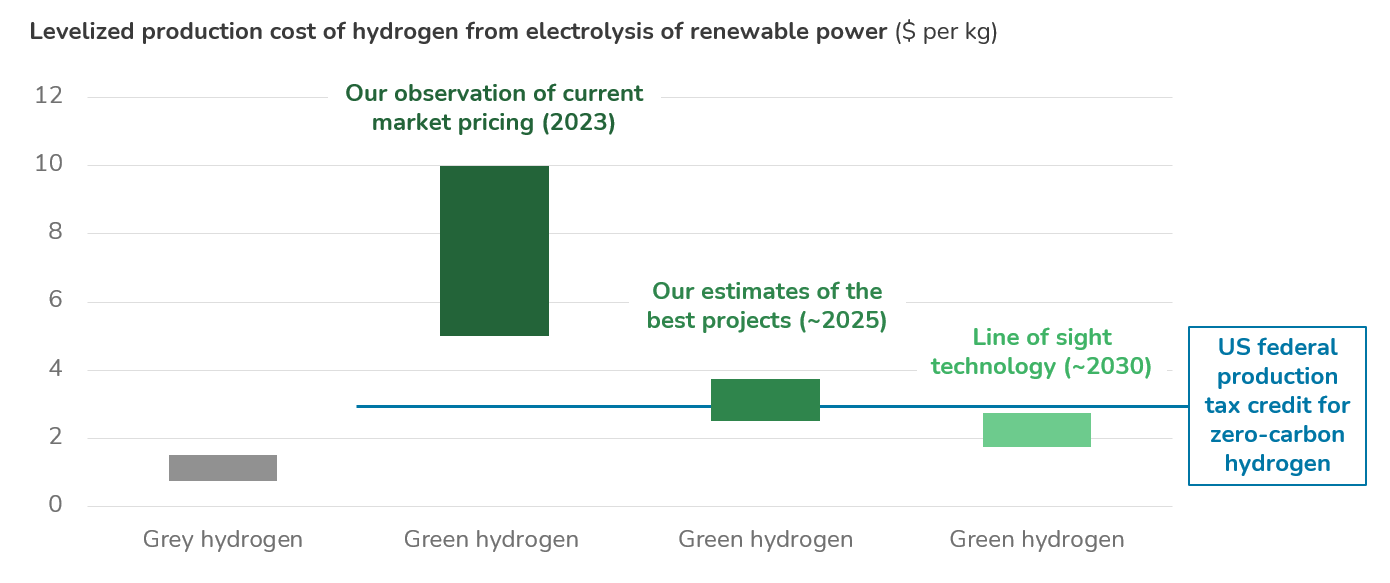
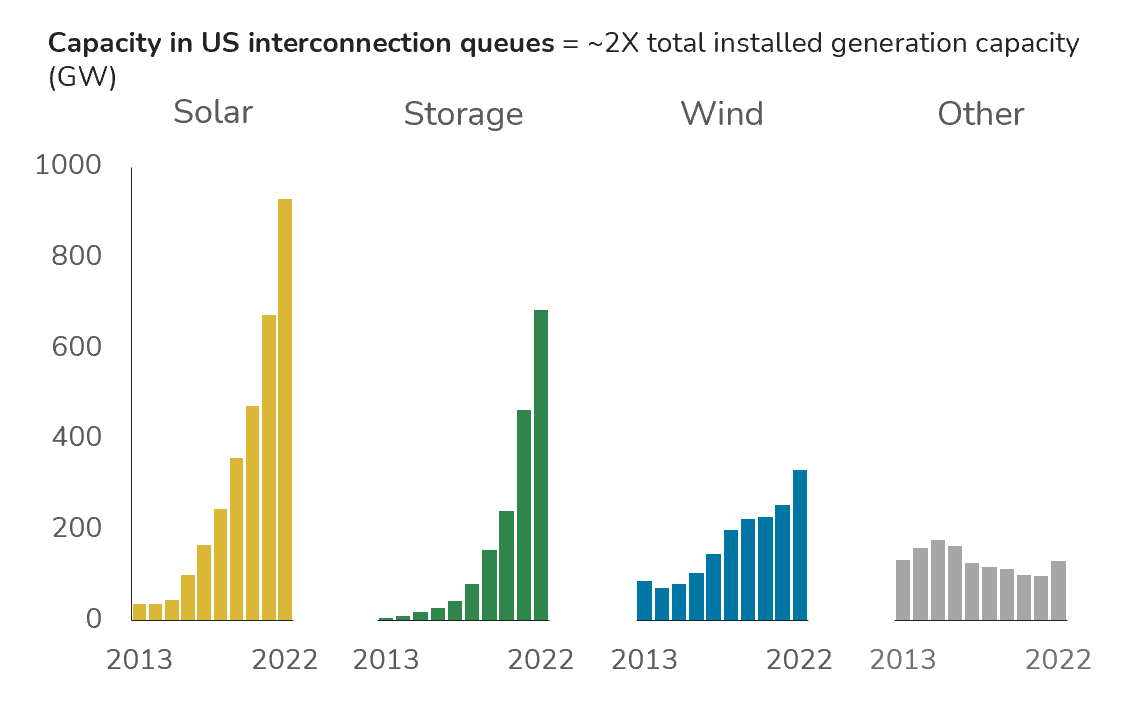



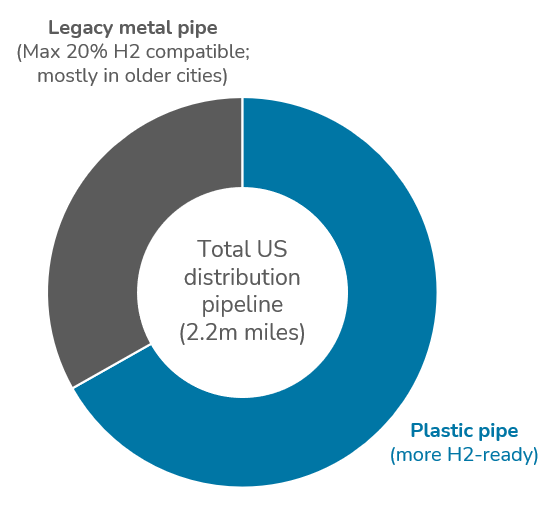
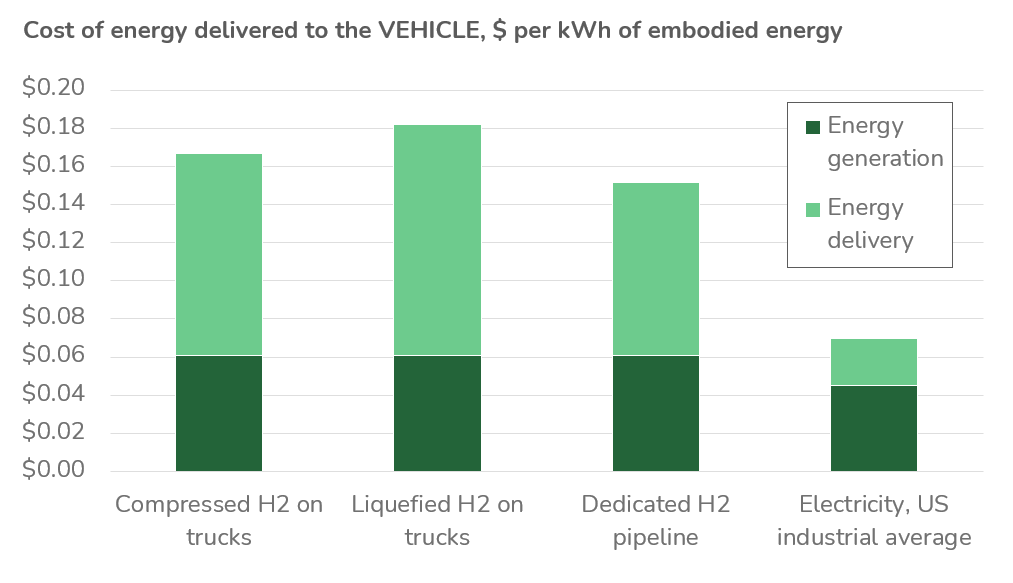
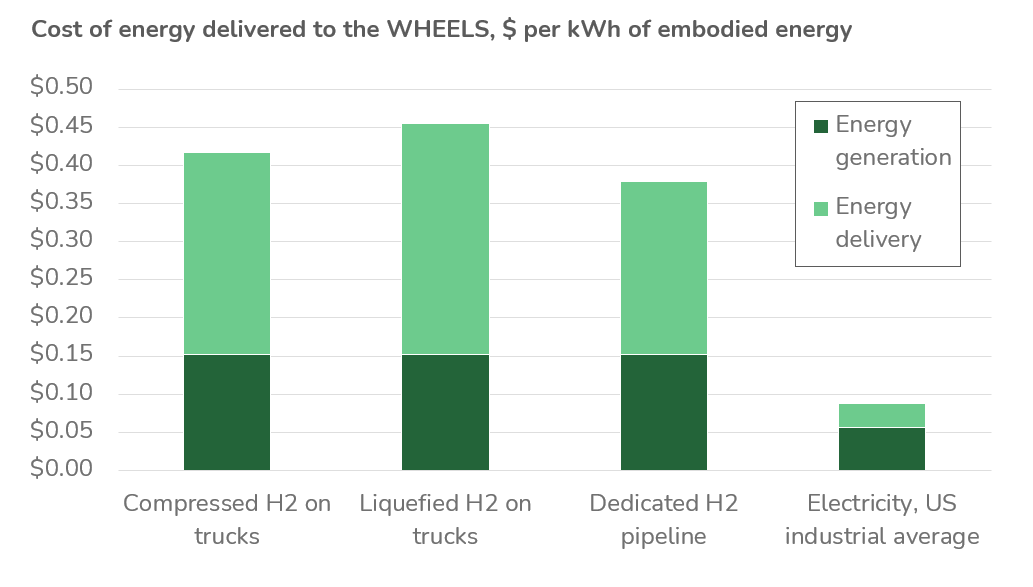
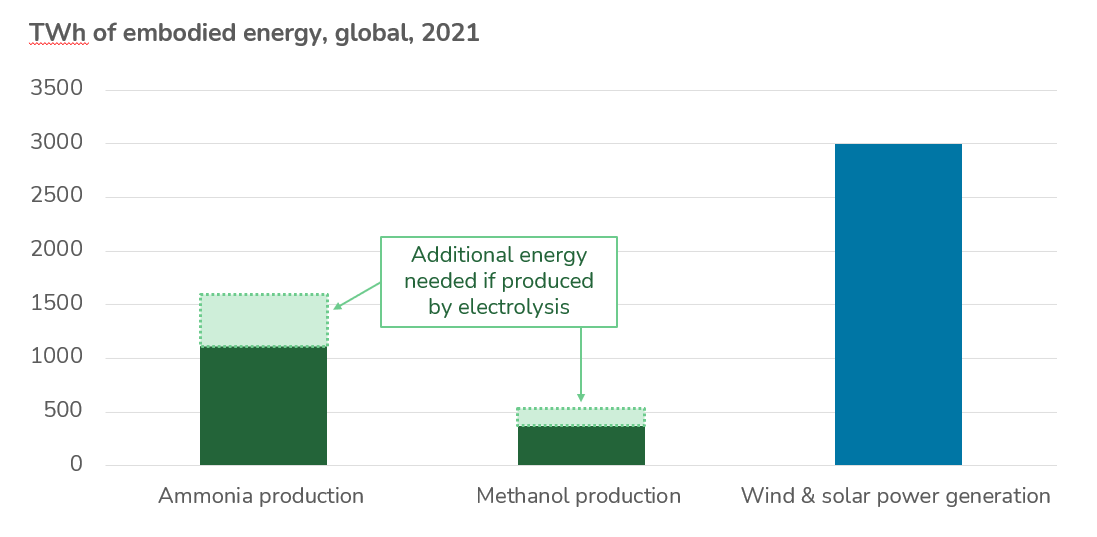
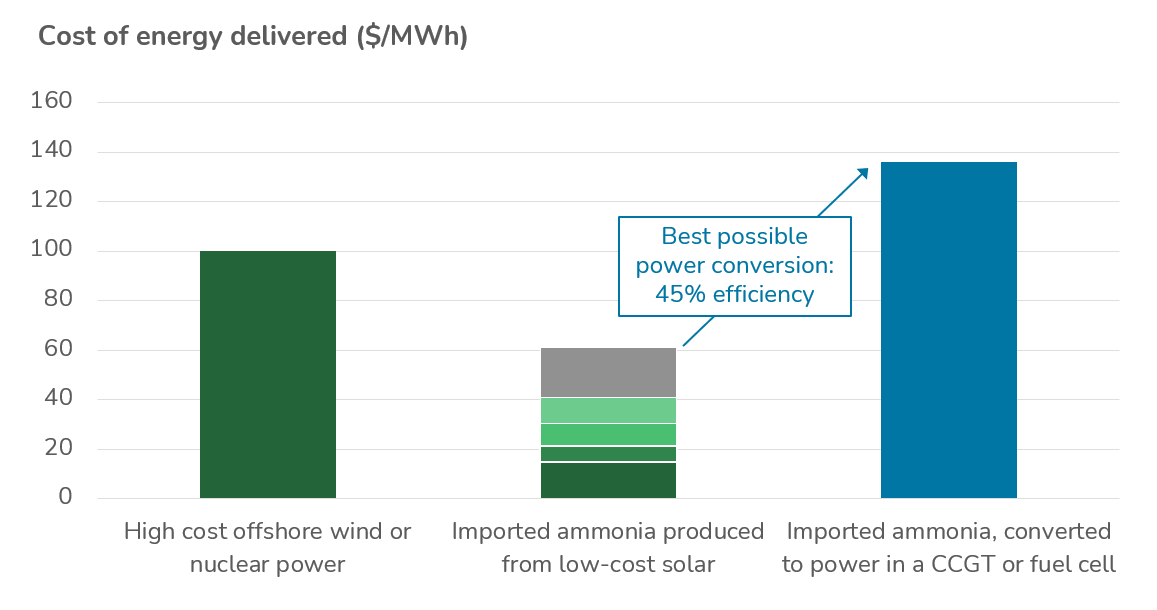
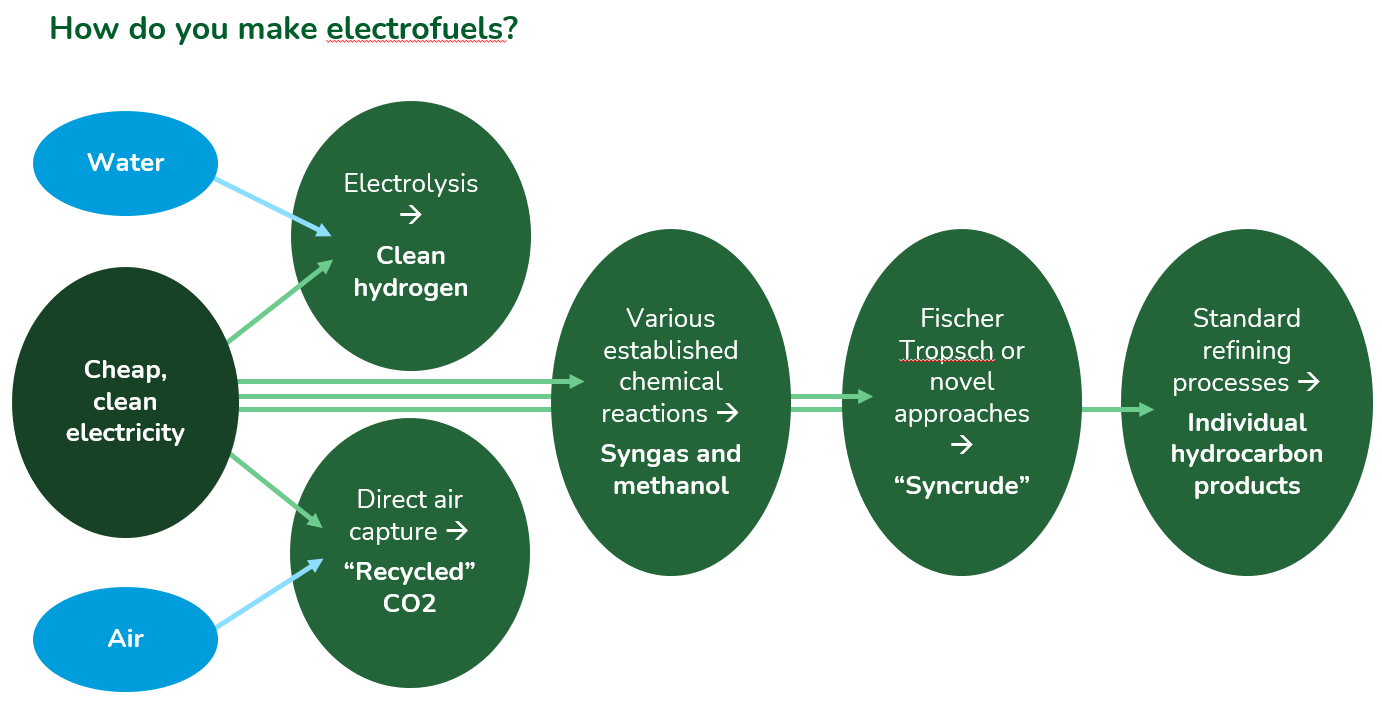
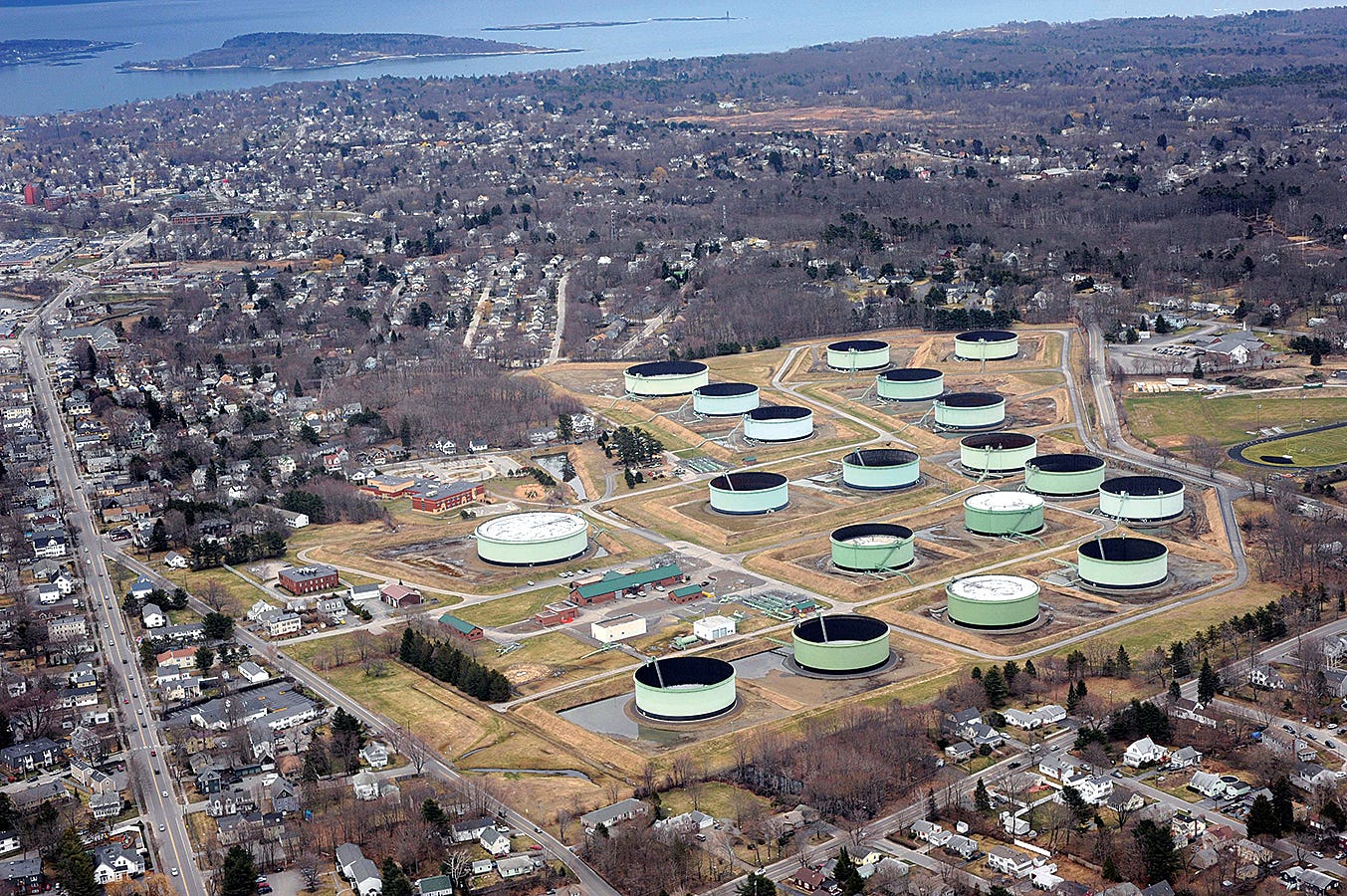
Hey Andy - really interesting post, and I certainly agree with your major takeaways. Thanks also for the pointers to Michael Liebreich’s work.
One important question is around the scale of ultra-long energy storage - is it as high as the ~13% of annual consumption that we currently store? Could it be even higher (up to ~20% in Great Britain as proposed by one of Liebreich’s interviews - worth reading at least the briefing, I put a link at the end) to help compensate for increasing intermittency as renewable sources take over?
If either of those is even close to accurate, then the scale of that market is huge - but it has weird dynamics because a large amount of capital is tied up in stored energy and returns from using that energy are infrequent and unpredictable (tied to weather patterns). Hard to say what a realistic model for a functioning market there would be, but given the scale it could have a major impact on how hydrogen and associated hardware is deployed.
https://royalsociety.org/topics-policy/projects/low-carbon-energy-programme/large-scale-electricity-storage/
One quick thing - you jumped from “Good Reason…” 2 to 4. If there is a Good Reason 3 that didn’t make it in, let us know what it is!
Great post Andy.
I think pipeline conversion potential may surprise you